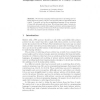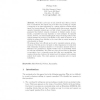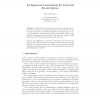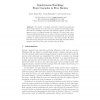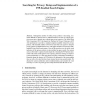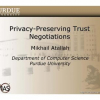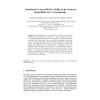113
click to vote
PET
2004
Springer
15 years 6 months ago
2004
Springer
Abstract. We develop a language-based approach for modeling and verifying aspects of privacy policies. Our approach relies on information-flow control. Concretely, we use the prog...
129
click to vote
PET
2004
Springer
15 years 6 months ago
2004
Springer
There are a variety of well-known models for access control developed for purposes like formally modeling the access rights on files, databases, and web resources. However, the ex...
PET
2004
Springer
15 years 6 months ago
2004
Springer
We define a new type of mix network that offers a reduced form of robustness: the mixnet can prove that every message it outputs corresponds to an input submitted by a player wit...
PET
2004
Springer
15 years 6 months ago
2004
Springer
Abstract. Golle et al recently introduced universal re-encryption, defining it as re-encryption by a player who does not know the key used for the original encryption, but which s...
106
Voted
PET
2004
Springer
15 years 6 months ago
2004
Springer
Abstract. In a Ubiquitous Computing environment, sensors are actively collecting data, much of which can be very sensitive. Data will often be streaming at high rates (video and au...
82
Voted
PET
2004
Springer
15 years 6 months ago
2004
Springer
The variety of possible anonymity network topologies has spurred much debate in recent years. In a synchronous batching design, each batch of messages enters the mix network togeth...
113
click to vote
PET
2004
Springer
15 years 6 months ago
2004
Springer
Abstract. Although the number of online privacy policies is increasing, it remains difficult for Internet users to understand them, let alone to compare policies across sites or i...
74
Voted
PET
2004
Springer
15 years 6 months ago
2004
Springer
PET
2004
Springer
15 years 6 months ago
2004
Springer
Internet computing technologies, like grid computing, enable a weak computational device connected to such a grid to be less limited by its inadequate local computational, storage,...
119
Voted
EUROPKI
2004
Springer
15 years 6 months ago
2004
Springer
The implementation of a standard PKI in a mobile ad hoc network (MANET) is not practical for several reasons: (1) lack of a fixed infrastructure; (2) a centralized certification au...
